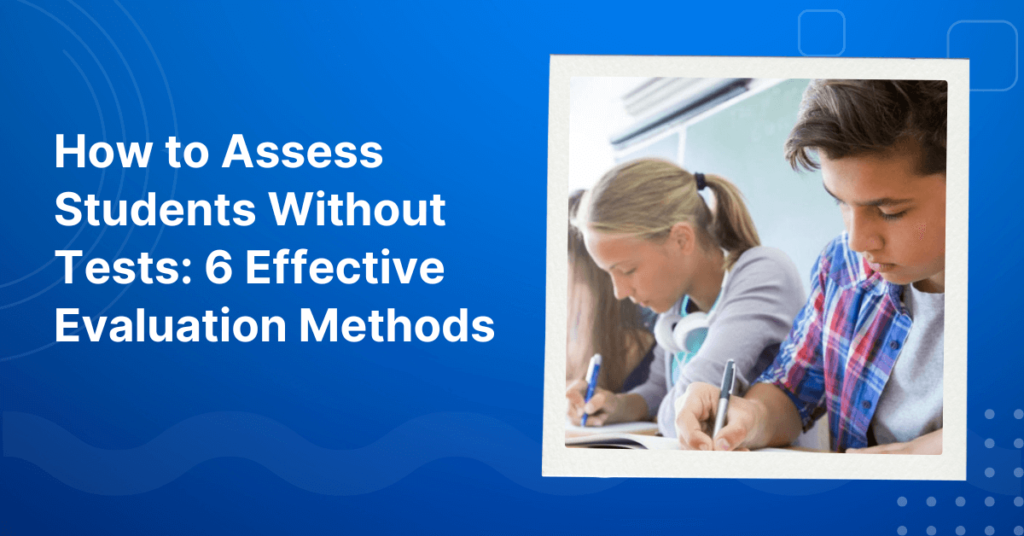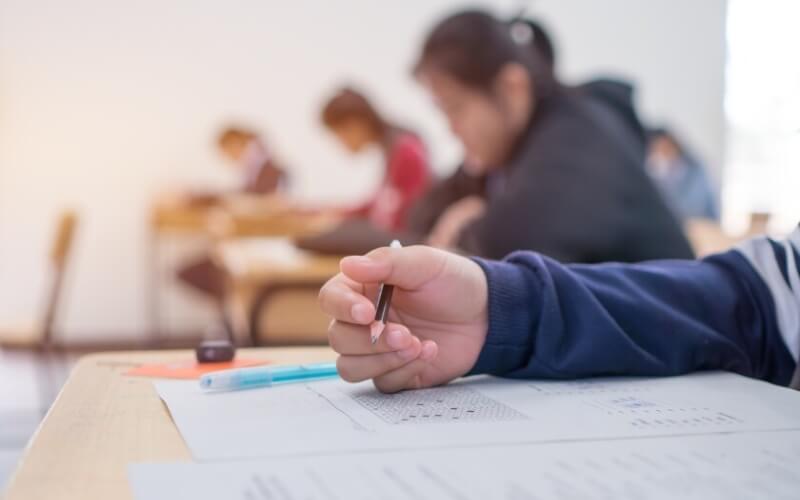Discover innovative ways to assess student learning beyond traditional testing methods. This comprehensive guide explores diverse evaluation strategies that accurately measure student progress while fostering engagement and deeper understanding. Learn how educators worldwide are successfully implementing test-free assessment approaches that better reflect real-world learning and student capabilities!

For decades, traditional testing methods, such as standardized exams and multiple-choice quizzes, have been the cornerstone of educational assessment. However, these methods often fail to capture the full scope of a student’s abilities, creativity, and critical thinking skills. While traditional tests can measure knowledge retention and certain cognitive abilities, they often overlook crucial aspects such as problem-solving, collaboration, and real-world application.
The need for diverse assessment methods is greater than ever in modern education. By incorporating alternatives to traditional testing, educators can foster a more inclusive learning environment that accommodates different learning styles and promotes comprehensive understanding.
Explore More Teaching Tips: What Are the Big 8 Engagement Strategies?
What Are the Most Effective Traditional Alternatives to Testing?
How to Implement Portfolio-Based Assessment in Your Classroom?
Portfolios are a compilation of a student’s work over time, showcasing their progress and achievements. This method allows educators to evaluate a student’s growth rather than focusing on a single test score.
- Advantages: Portfolios provide a holistic view of a student’s abilities, emphasizing creativity, effort, and improvement. They also encourage students to reflect on their learning journey, fostering self-awareness.
- Implementation Tips: Teachers can guide students to curate their portfolios with written assignments, artwork, projects, or even digital media. Regular check-ins help ensure portfolios remain organized and relevant.
Why Choose Performance-Based Evaluation Methods for Student Growth?
Performance-based evaluation involves assessing students through tasks that demonstrate their practical skills and knowledge application. Examples include presentations, experiments, or problem-solving activities.
- Advantages: This approach mirrors real-world challenges, preparing students for future scenarios. It also encourages active learning and critical thinking.
- Implementation Tips: Set clear rubrics for evaluating performances to ensure consistency and fairness. Encourage students to ask questions and seek feedback during the process.
Which Collaborative Assessment Methods Drive Better Learning Outcomes?
How Do Peer and Self-Assessment Techniques Improve Student Understanding?
Empowering students to assess themselves and their peers fosters accountability and mutual respect in the classroom.
- Peer Assessment: Students evaluate each other’s work based on established criteria. This not only helps them understand the evaluation process but also promotes constructive feedback skills.
- Self-Assessment: Encouraging students to reflect on their own performance helps build self-awareness and personal responsibility for learning.
Advantages: These methods develop critical thinking, collaboration, and self-regulation skills. They also reduce the teacher’s assessment workload.
Implementation Tips: Provide clear guidelines and examples for peer and self-assessment to ensure students provide meaningful feedback.
What Makes Teacher-Led Assessment Strategies Most Effective?
This involves one-on-one discussions or small group evaluations where teachers provide immediate feedback and support.
- Advantages: Personalized feedback helps students understand their strengths and areas for improvement. This approach fosters a deeper teacher-student connection.
- Implementation Tips: Allocate time for regular check-ins or conferences with students to discuss their progress.
Continue Learning: What Are the 4 C’s of Lesson Planning? A Complete Teacher’s Guide

Why Should You Use Interactive Assessment Approaches?
Which Engaging Assessment Tools Best Measure Student Progress?
Interactive tools such as gamification, digital quizzes, and simulations can make assessments more engaging and enjoyable.
- Examples: Platforms like Kahoot, Quizlet, or Socrative offer innovative ways to evaluate understanding through fun and interactive methods.
- Advantages: These tools increase student motivation and participation. They are particularly effective for visual and kinesthetic learners.
- Implementation Tips: Use these tools to complement other assessment methods, ensuring they align with learning objectives.
How to Connect Real-World Applications to Student Assessment?
Connecting assessments to real-life scenarios can make learning more meaningful and relevant.
- Examples: Students could create business plans, design prototypes, or analyze real-world case studies as part of their evaluation.
- Advantages: This approach bridges the gap between theory and practice, helping students see the value of their education in everyday life.
- Implementation Tips: Involve community resources or guest speakers to make real-world assessments more impactful.
Frequently Asked Questions About Test-Free Assessment Methods
Why should we move away from traditional testing methods?
Traditional tests often emphasize memorization over critical thinking and problem-solving. By adopting diverse assessment methods, educators can evaluate students more holistically and cater to different learning styles.
What are some challenges of alternative assessments?
Alternative assessments can be time-consuming to plan and execute. Teachers may also need additional training to implement these methods effectively. However, the benefits far outweigh the challenges, as these methods provide a more accurate measure of student abilities.

How can I start incorporating alternative assessments in my classroom?
Start small by introducing one or two alternative methods, such as portfolios or peer assessments. Gradually expand your approach as you become more comfortable. Collaboration with colleagues can also provide valuable insights and ideas.
Finding alternative ways to assess students is not only about moving away from traditional tests, but also about embracing a more holistic and personalized approach to learning. By exploring different assessment strategies, educators can better understand their students’ strengths, encouraging deeper engagement and fostering a more inclusive learning environment.






